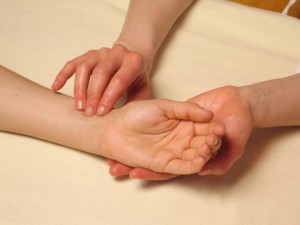2
$215.99
Mini Cart

The imbalance of doshas causing various types of diseases and the path followed by the doshas to cause disease is known as pathogenesis or samprapti. Since diseases develop in distinct stages, a good knowledge of those helps in early recognition of disease. Thus, making its treatment more effective. Ayurveda thus elaborates a six stage process for diagnosis. The first 4 stages being unique to Ayurveda in that they permit recognition and elimination of the disease before it ventures into differentiated clinical symptoms.
Ayurveda recognizes the six stages of diagnosis process (pathogenesis) known as kriyakal (action time). These six stages are :
Stage One – Accumulation (sanchaya)
Poor digestive power and excess of dosha is responsible for such a condition.
The toxins (ama) produced by improper digestion collects in the gastro-intestinal (GI) tract.
These Toxins resulting from a kapha imbalance accumulates in the stomach, those associated with a pitta imbalance collects in the small intestine, and that related to vata malfunction amasses in the colon.
Due to the presence of one of these toxins, mild and ill-defined symptoms may show.
We should recognize the toxins and proper eliminate the cause through panchakarma procedures instead of ignoring or suppressing it.
Stage Two – Aggravation (prokapa)
The diet, lifestyle and seasons excite the accumulated and stagnant doshas. The toxins get accumulated and provoke the site of production in the gastrointestinal tract.
Stage Three – Spread (prasara)
In the third stage the accumulated toxins in the gastro intestinal tract starts overflowing. Up to this stage the use of proper measures can help in achieving the restoration of doshic balance.
Generally, up to this stage the damage is entirely reversible and restoration of doshic balance can be achieved with proper measures. Or there may be spontaneous prashama (remission) influenced by seasonal changes. Thus there is sanchaya of pitta in rainy season, prakopa in fall and prasara in early winter. Based on degree of excitation, it might even passed the stages of prashama or prasara.
Stage Four – Agumentation (Sthana Samshraya)
The overflowing toxins from the gastrointestinal tract makes their away to the localizes, weak and defective tissues or dhatus thereby leading to malfunction and structural damage damage. It is from here that specific degenerating disease and susceptibilities to serious infections begin.
Stage Five – Symptom Manifestation (Vyakti)
The affected location starts showing different symptoms and these symptoms are used for classification and diagnosis of the various diseases.
Stage Six – Complications/Differentiation (bheda)
The disease becomes chronic and it takes long time to reach at this final stage. This stage provides a complete knowledge of the symptoms making the physicians clear of the nature of the disease.
Besides the stages of disease the physicians should also know the complete history of patient. Ayurveda recognizes the closely knotted relationship between describing the pathological process in a person and assessing the state of disease. Ayurveda has evolved a unique simultaneous approach to diagnosis and pathology. This method is known as rogi-roga pariksha. Ayurveda is the only medical system that describes an elaborate strategy for assessing both the patient (rogi) and the disease (roga). For the complete interrogation and physical examination, Ayurveda uses a two-part approach :
Rogipareeksha – diagnosis of the patient
Rogapareeksha – diagnosis of the disease
The rogipareeksha is the real strength of Ayurvedic diagnosis. It includes the physician’s judgment regarding the patient’s temperament, discipline, habits, digestive capacity, support system, genetic traits, intelligence and the constitutional type. The rogipareeksha is carried out in different ways. Rogapareeksha is the diagnosis of the disease and it aims towards assessing the nature of the disease. It involves the examination of pulse, tongue, voice, skin, eye, general appearance, urine & stool. The rogapareeksha provides the complete nature of the disease along with general condition of patient.